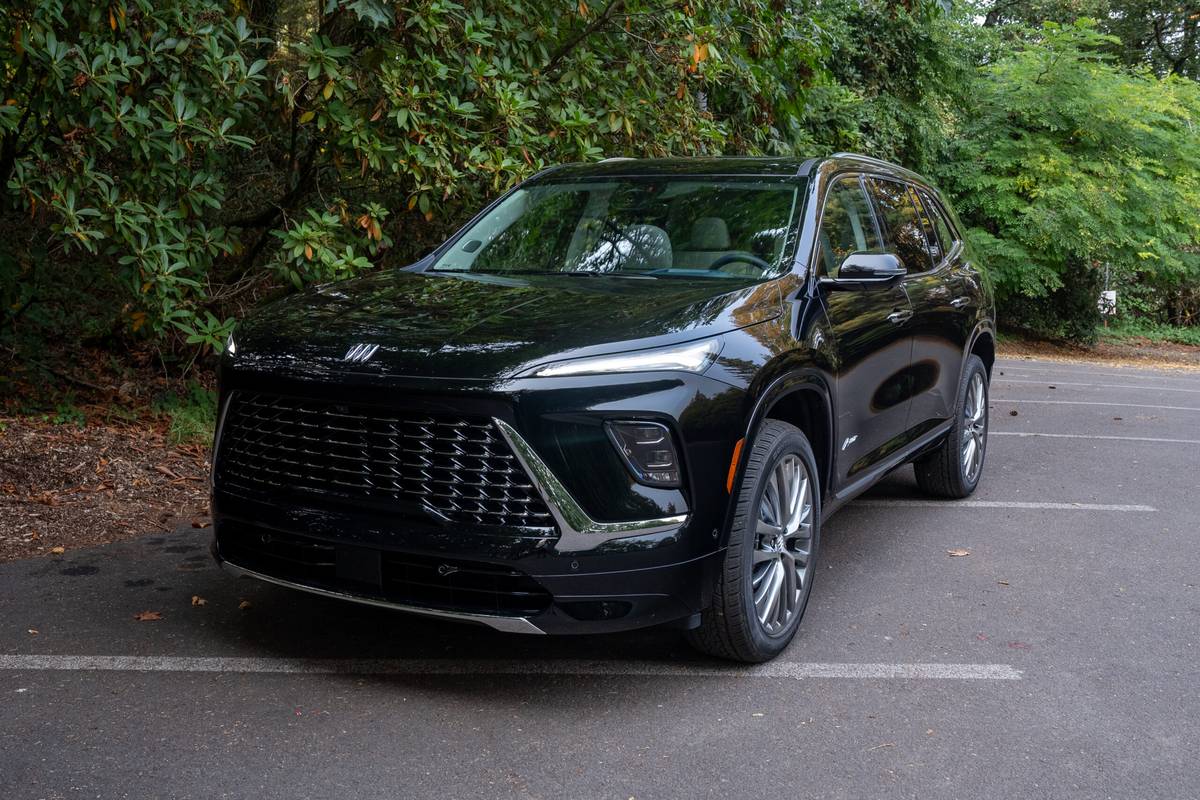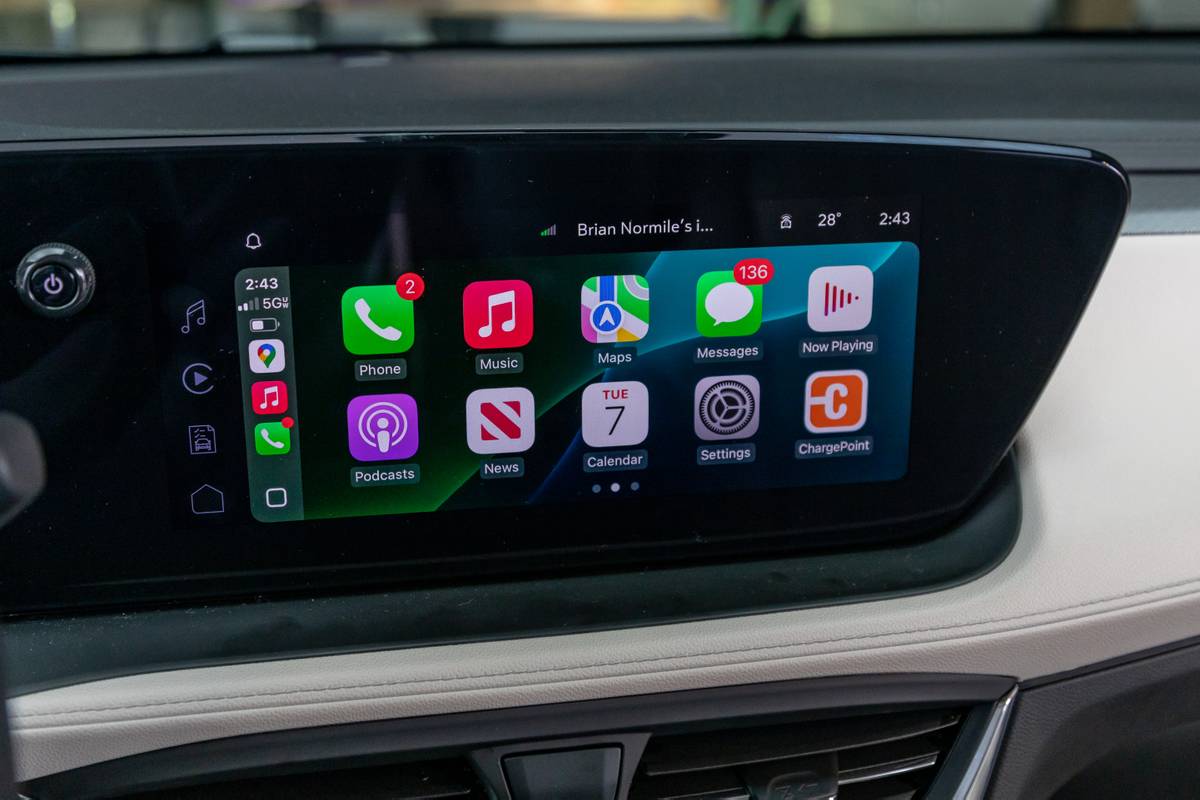The Detroit News's view
AUBURN HILLS — Last year, DaimlerChrysler AG’s Chrysler Group ordered some engineers to attend a screening of “The Fast and The Furious,” the 2001 cult movie about tuners — young drivers, mostly male, who are willing to shell out big bucks to transform their econo-cars, mostly imports, into muscle-bound street racers.
Chrysler hoped to get the engineers’ creative juices flowing as the automaker prepared to launch the 2003 Dodge SRT-4, which arrived in showrooms in January, and snag a piece of the growing tuner market.
SRT-4 engineers like to brag that their $19,995 car, based on the Neon small-car, is the “first legitimate domestic tuner,” with its turbocharged in-line four-cylinder engine that makes 215 horsepower and 245 pounds-feet of torque.
Indeed, the SRT-4 is a striking entry-level model, boasting sticky tires, Viper-style racing seats, carbon-fiber texture leather steering wheel and turbo boost gauge.
The 17-inch performance tires provide excellent grip, and the car’s tuned suspension elevates handling to near-sports car-like levels. Armchair tuners needn’t worry about power either — not with a turbo engine that has a higher output than many six-cylinder pretenders.
“The idea was to pull out the stops and make this as obscene as possible,” said Stephan Zweidler, the 31-year-old engineer who shepherded the SRT-4 into production.
For those enthusiasts who’d just as soon buy an off-the-shelf performance car — not to mention one with a bargain-basement price — the new SRT-4 should fill the bill.
Chrysler isn’t the only Detroit automaker interested in attracting young hot-rodders.
In March, Ford Motor Co. began offering the first add-on part for the performance-oriented SVT Focus — a $3,500 supercharger that adds 50 horsepower and 35 pounds-feet of torque to the car’s 2-liter four-cylinder engine.
The supercharger was created by Westminster, Calif.-based Jackson Racing, which usually provides parts for import brands like Honda and Mazda. Ford spokesman Alan Hall said the supercharger sold out within three weeks.
Saturn, typically known as General Motors Corp.’s female-friendly brand, will inject a big dose of tuner testosterone into its lineup in 2004 with two performance-oriented products: the Ion Red Line Quad Coupe, priced at around $20,000, and the Vue Red Line sport-utility vehicle, which is expected to start at around $24,000.
The Red Line name, a reference to pushing the limit on a vehicle’s tachometer, is symbolic of a significant change in attitude in the Motor City.
“Detroit is starting to push the envelope,” said Tracy Thueme, Ion Red Line program engineering manager. “It requires you to reassess and ask, ‘What does this customer really want?'”
The Ion Red Line will introduce Saturn’s first supercharger and standard performance seats. Horsepower will jump from 137 in the conventional Ion to an es timated 200 horsepower in the Red Line model.
Saturn engineers are going through the Ion from top to bottom, strengthening and reinforcing the car where necessary to turn it into a performance machine. The Ion Red Line also will feature larger four-wheel disc brakes, as well as revised springs, shocks, bushings and stabilizer bars. The five-speed manual gearbox will have increased torque capacity, close-ratio gearing and a short-throw shifter.
The air-induction and exhaust systems get high-flow performance tuning for better efficiency. The car will ride on 17-inch five-spoke, forged-alloy wheels, mounted with Continental performance tires.
The Vue Red Line will feature a lowered suspension, ground effects — side sills and spoilers — and 18-inch wheels and tires, plus a new 250-horsepower, 3.5-liter V-6 which parent GM is importing from Honda.
The engine replaces the current optional 3.0-liter V-6 and will be mated to a five-speed automatic transmission for a 0-to-60 time of about seven seconds — remarkable for an SUV.
The new SRT-4 and Saturn Red Line models are targeted directly at tuners, who are expected to affect not only how cars are designed, but how fast new products reach the marketplace.
When the first SRT-4 concept car was shown in 1999 at the Specialty Equipment Market Association show in Las Vegas, tuners were ready to write checks on the spot.
“The tuner crowd is interested in instant gratification,” said Zweidler. “When you show them a car, they want to buy it right away. At that time, it was just a concept car. But they wanted it now. The message to us is, ‘Let’s get rocking.'”
So deep inside a basement garage at the Chrysler Tech Center in Auburn Hills is a one-of-a-kind silver Dodge Neon. Engineers have been feverishly customizing the car to have it ready for the June 6 debut of “2 Fast 2 Furious,” the much-anticipated sequel to “The Fast and The Furious.”
They swapped out the base four-cylinder engine and installed a turbocharged version that makes 240 horsepower. A couple of body kits and a wing jazz up the exterior. The vehicle will be unveiled next month at the 2003 Detroit Street Dreams show at Cobo Center.
For now, no one outside of Chrysler’s Performance Vehicle Operations has seen it. Zweidler said the still-unnamed silver Neon will send a message to tuners and the broader automotive industry.
“It’s all about realizing how much we can gain by earning the respect, trust and interest of the young teenage buyer,” said Zweidler, himself a tuner who turned his hobby into his job. “You get them in our cars, wow them about the performance and looks, and you create a customer for life.”
Detroit engineers and designers are still figuring out where the boundaries are when it comes to creating products for young tuners. Several auto executives say they have struggled with how many factory modifications should be added to a vehicle.
“How much do you put out there as standard and how much do you let the customer personalize?” asked Saturn’s Thueme. “We’ve focused on bigger brakes, the engine, exhaust and cooling systems — the hard-core things. For a customer, it would be a lot of cutting, pasting and risky stuff that takes a lot of investment. The customization with lights and color is something they can do themselves.”
Latest news



